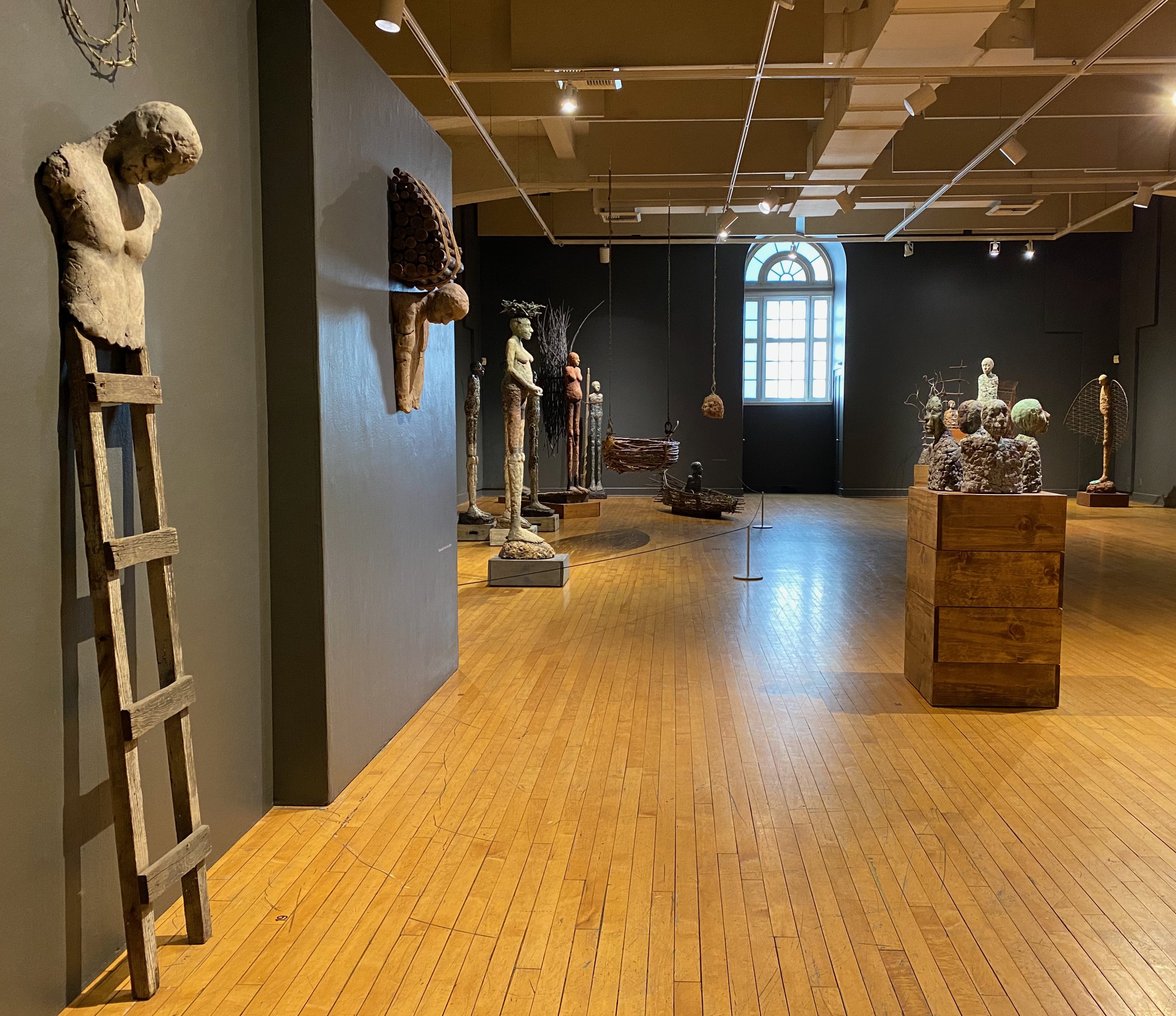The weight of memory
A Retrospective
Riverside Museum of Art, 2022
When I first stood in front of William Catling's Wellspring of Silence, it was included in a garden sculpture exhibition. Water tumbled from the bronze bird nest atop a female figure's head into her outstretched hands. Her eyes were closed with a slight smile on her face while the water caught the sunlight. I was awestruck at Catling's ability to render the essence of peaceful joy from mud and metal.
It is human nature to want to categorize things. Human, plant, animal, rock, sky. As curators, we feel the need to take that much further, diving deeply into materials, origin, influence, and intent. To say that William Catling's works of clay are deeply and heavily molded sculptures of the human form that aim to capture varying generalities of the human experience would be accurate. Accurate, but far from complete. His figures defy their heaviness. Even the found objects incorporated into his work have their own unique stories, as often about how they were found as their relationship to events in Catling's life. Wooden oars become limbs and massed wire bird cages, vintage weights, pulleys, and rope become metaphor.
Catling has a remarkable ability to imbue his chosen medium with powerful, and perhaps more importantly, a recognizable emotion and spirit. Heavily built with layers of clay, his figures are filled with an ethereal lightness, one that defies their construction.
Much of Catling's work relies heavily on his own experiences. A group of three works from his 2013 The Rook Series pull memories from his youthful fascination with castle-like structures, such as the rook from the game of chess, that have remained a touchstone throughout his life. Stone torsos provide foundation that give way to the serene faces that are so familiar in Catling's sculpture. The rooks are deeply layered, giving glimpse into architectural structure beneath the figure's exterior. In El Portal del Corazon and Descent into Ashes Where There is No Fire, closed windows and doorways guard the inner life residing inside. The exposed stone of Built Upon a Column of Stones, provides no such possibility of entry.
The works included in William Catling's retrospective represent a span of 37 years, many being shown together for the first time. From the beginning we talked about a forest of figures. Such an installation provided an opportunity for his figures to interact and tell a much richer and complete story than viewers might experience with figures standing alone.
It has been an honor to work with William on his retrospective at the Riverside Art Museum. He is a consummate storyteller, weaving personal and universal histories together in ways that provide our audiences multiple points of entry and a means to find the artist's intent and assign their own meaning in the work.
Todd Wingate, Curator
Riverside Museum of Art












